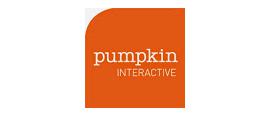Sustainability and life cycle assessment
This collection of resources combines presentations, videos and classroom tasks to support the teaching of sustainability and life cycle assessment.
In the new subject content for GCSE D&T, students should be able to select materials and components based on ethical factors, taking into consideration the ecological and social footprint of materials.
- ALL
- Teacher guidance
- Video
- Activity sheet
- External link
- Other
Teacher guidance
One Planet Packaging
These resources cover every aspect of sustainable packaging design. The slides and the case study are really useful for illustrating the core principles, and the resource sheets are equally useful as handouts for students, or background information for non-specialist teachers
Recycling and Sustainability
This booklet provides an overview of waste management, with particular focus on the different processes used in the recovery of materials from waste and on the end use of recycled materials. It also provides a practical introduction to the physics behind the processes used to separate waste materials, with activities and teachers notes
Video
How to Save the Planet and Be Cool
This makes an amusing starter - In this Science Museum video, the Punk Science team show some of the changes needed to help prevent climate change, focusing on reuse, recycling and reducing waste. Many ways of reducing waste are shown in the form of a photo diary. The issues of food miles and vehicle emissions are also addressed.
Textiles: Eco Design
Tom is the Creative Director for outdoor eco-clothing brand, Finnister. Their customers not only want clothing which looks good and performs well, but also which reflects concern for the environment.
In the film clip, Tom explains what eco-design means. He is always looking for new types of fabric which perform better than existing fabrics, but with a lower environmental impact.
Each material is evaluated to assess its total impact:
- Is it from a sustainable source?
- What chemicals, energy and other resources were needed to manufacture it?
- How much transportation is involved?
- Does it need extra chemical or physical finshed to meet performance requirements?
- Is it biodegradable or recyclable?
Choosing Sustainable Materials
This film clip looks at a sustainable system of timber production and woodland management. It is explained that sustainability is the way in which the environment is managed, not whether trees are felled or not. Clear felling uses excavating machines to clear large areas of woodland at a time as part of an ongoing cycle of felling and re-planting.
It explained how designers can be sure that the wood they are using comes from a sustainably managed source, including what the Forest Stewardship Council logo means.
Activity sheet
Where's the impact?
From Practical Action, this resource looks at life-cycle analysis and how it is used to work out the environmental impact of different products.
The Paper Cup Company
Choosing between a polystyrene or a paper cup is more complicated than you may think! This Dragons Den style resource is a great way to develop students' understanding of the ecological and social footprint of materials.
Paper cups have an environmental impact. Although the cups themselves are made from renewable resources (wood chips), paper cups actually consume more non-renewable resources in their manufacture than cups made of polystyrene foam, since converting the wood chips to paper pulp requires energy. During their life cycle, the only significant effluent of polystyrene cups is pentane. In contrast, the manufacture of paper requires several inorganic chemicals and creates large amounts of water effluents. Similarly, recycling polystyrene cups has less impact than recycling paper cups. Paper cups are, however, more biodegradable than polystyrene cups, with the caveat that in an anaerobic landfill paper cups will generally remain undegraded for a long time.
Less is more!
This resource gets students to look at how a product could be redesigned to require less packaging. Companies are being encouraged to develop ‘environmentally-smart’ retail packaging design.
In this activity, students are challenged to redesign a familiar product so that it has less (and more sustainable) packaging
Product analysis: impacts on people and the environment
This resource from Practical Action includes a presentation and worksheets which give Key Stage Three and Four students opportunities to understand more about the impact of existing and new products on people and the environment. The presentation is packed with useful activities to reinforce students' learning.
Design abacus
An eco-tool used to compare the sustainability of two products or design ideas
What is the role of a designer?
This presentation and linked activities provide design and technology teachers with opportunities to highlight the different values and beliefs that designers may hold.
Students can engage in exploring their own values about the responsibilities of designers and companies too.
The powerpoint highlights the work of two designers Emily Cummins and Steven Hunt, both of whom have chosen to be involved in the development of technologies that 'make a difference to people’s lives'
External link
The Great Recovery
This is a fantastic film, showing the link between the chemistry of recycling and product design - this is a good opportunity to link up with the science department, or to simply illustrate the link between the STEM subjects to students!
Have a look at the Great Recovery website for more ideas and examples of industry design solutions: http://www.greatrecovery.org.uk/resources/
Rexam's Full Circle film - the lifecycle of an aluminium can
Full Circle is an educational film that explains the can making process, its distribution and what happens to it once used.
The aluminium can is 100% and infinitely recyclable. A can that is on the retailers' shelves tomorrow, if recycled can be back on the shelf again as a new can in as little as 60 days
Other
System Reset: Design and Technology for a Circular Economy
These resources are all designed to introduce the principles of the circular economy. Before teaching the activities, it is recommended that teachers firstly introduce the concept of the circular economy using the introductory resources kit.
Constructed for use in design and technology lessons, any of the six activities can be used as a standalone resource, or they can be incorporated into schemes of work across a number of areas such as product design, graphics, textiles, systems and control.







